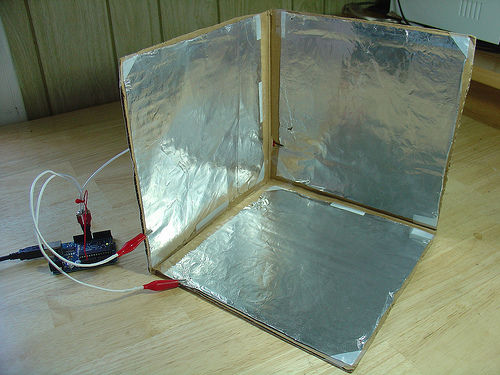Capacitive Touch Screens
Using above the screen of many
cellphones is a thin capacitor used to sense your finger's
position. In the iPhone, made by Apple, the capacitors are
arranged in a coordinate system. This allows for a matrix
of measurable capacitors. Multiple "touches" can be
detected to a high accuracy because of this.
Mutual Capacitance requires two
separate layers of material. One line is subject to a
current while the other is used to complete the capacitor
and to measure the voltage.
Self Capacitance uses an
outside conductor such as a finger. The plates in the
phone are subject to a voltage and have
capacitance-sensing circuitry. A dielectric such as glass
is between the sensor and your finger.
When you touch the phone, a series of
values are given to the processor. These are measured by
the individual points as well as the surrounding points
but these are likely to have a lower capacitance.
 http://electronics.howstuffworks.com/iphone2.htm
http://electronics.howstuffworks.com/iphone2.htm
In recent development, capacitive
sensors have actually been integrated into the screens so
that the screen and pixels themselves act as a conducting
plate. The thin glass overlay acts as a dielectric and
though a system of volt meters, can triangulate your
finger as it comes close and touches the screen.
http://scienceline.org/2012/01/okay-but-how-do-touch-screens-actually-work/
3D Capacitive Sensor
(Super Cool STUFF)
An interesting project developed by
a user on the website "Instructables" shows the amazing
potential (no pun intended) of capacitive sensors. 
Connected to a micro-controller "Arduino", that measures
the voltage of each panel. Each plate is merely Aluminum
foil. Your hand in the plane gives each plate another
conductor to make a capacitor with. Using the three
values from the Arduino, a 3d game of tic tac toe can be
played!
http://www.instructables.com/id/DIY-3D-Controller/
